Orlando is known for its beautiful scenery and diverse wildlife, including a wide variety of birds. The city is home to over 200 species of birds, both native and migratory.
From the majestic Bald Eagle to the colorful Roseate Spoonbill, there is a bird for everyone to enjoy in Orlando. Whether you are a bird enthusiast or someone looking to get a better view of the natural world, Orlando is the perfect place to go bird-watching.
With its variety of habitats, ranging from wetlands to urban parks, the city offers plenty of opportunities to observe birds in their natural habitat. Come explore the world of birds in Orlando!
1. Great Blue Heron
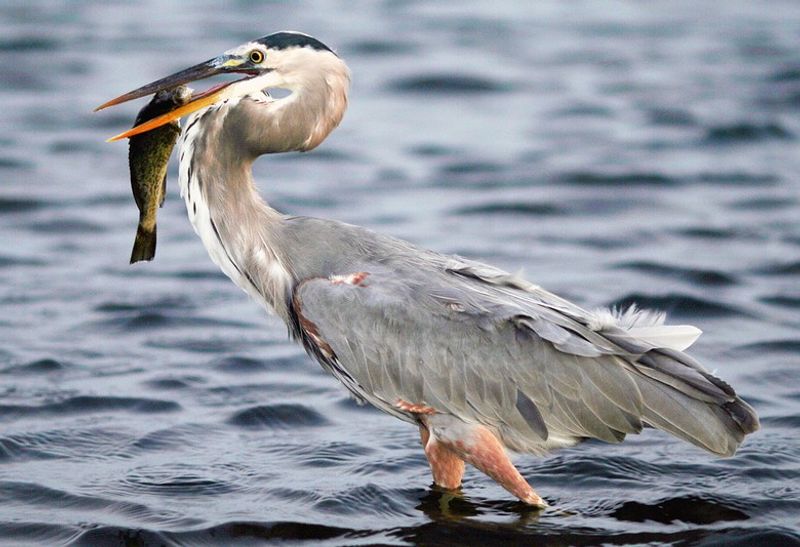
The great blue heron is a majestic bird belonging to the heron family, scientifically known as Ardeidae. It is a large wading bird, found near open water and wetlands across a large part of the Americas, from the Caribbean to the Galápagos Islands.
It is particularly common in North and Central America, although it can also be found in the far northwestern regions of South America. The great blue heron is easily recognizable thanks to its size and striking blue-grey color.
It has long legs and a long, curved neck, and is usually seen standing motionless in shallow water, waiting for its prey. It feeds mainly on fish, but is also known to hunt small mammals, amphibians, reptiles, insects, and even birds.
| Kingdom | Animalia |
| Phylum | Chordata |
| Class | Aves |
| Order | Pelecaniformes |
| Family | Ardeidae |
| Genus | Ardea |
| Species | A. herodias |
2. Northern Cardinal
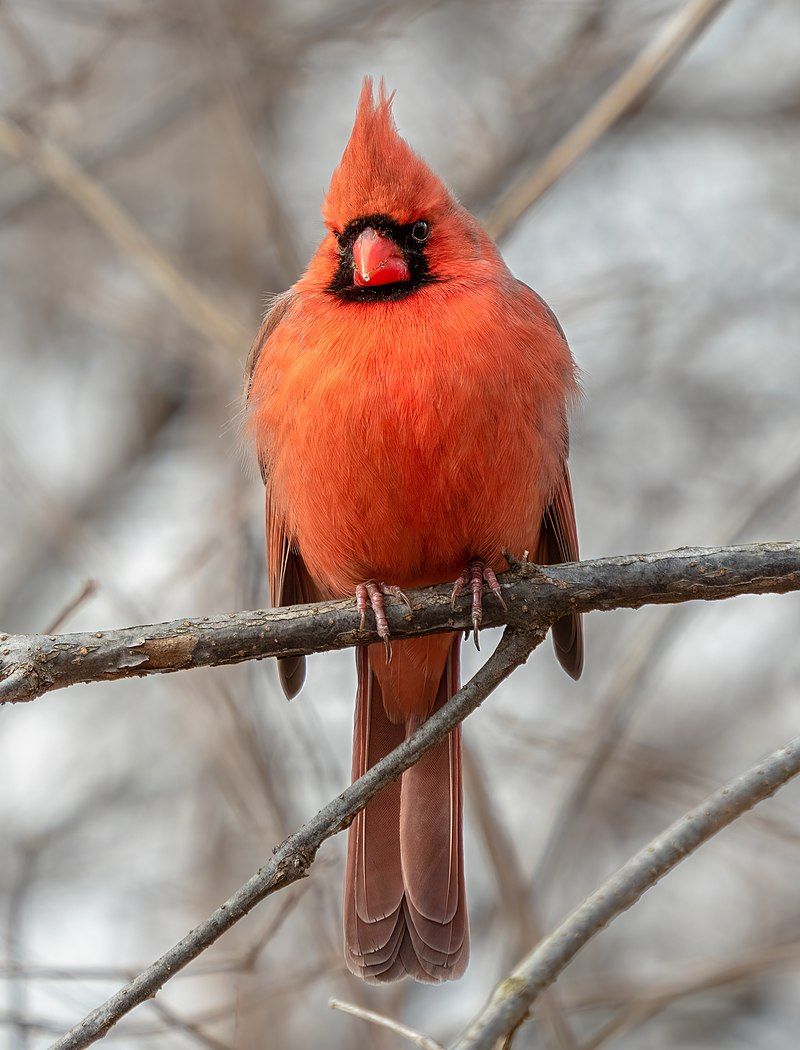
The northern cardinal is a brightly colored bird commonly found in North America. It is one of the most widespread and abundant species of its genus, Cardinalis, and is easily recognized for its deep red color and black face mask.
It is also known by several other names, including the redbird, common cardinal, red cardinal, and just cardinal. The northern cardinal is about 8-9 inches long, with a thick conical bill, and a short, thick tail.
It is usually found in forests, woodlands, gardens, and other areas with dense vegetation, where it feeds on insects and seeds. Cardinals are monogamous and often mate for life, with the male and female forming a pair bond.
They build their nests in thick foliage, usually close to the ground. The northern cardinal is a popular backyard bird, and is easily attracted to bird feeders. They are also popular among birdwatchers, as they are easy to observe and often vocalize.
The northern cardinal is a beautiful and unique species, and is a great addition to any backyard!
| Kingdom | Animalia |
| Phylum | Chordata |
| Class | Aves |
| Order | Passeriformes |
| Family | Cardinalidae |
| Genus | Cardinalis |
| Species | C. cardinalis |
3. Roseate Spoonbill
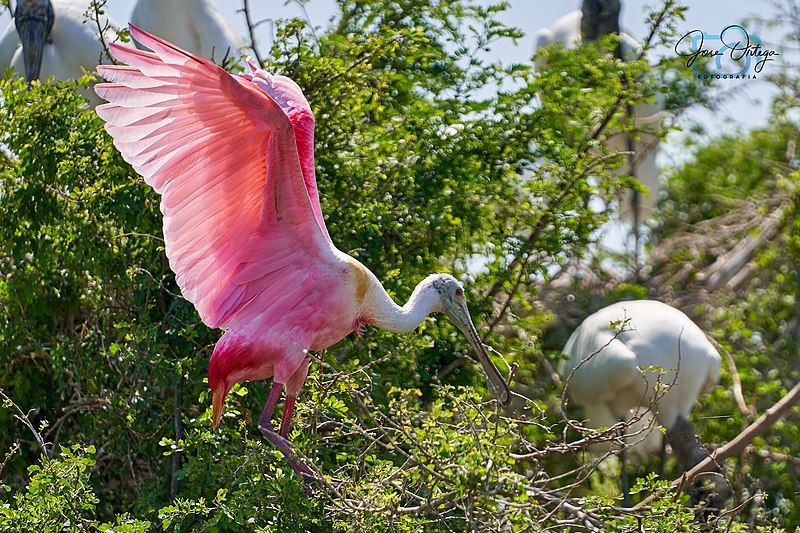
The roseate spoonbill is an interesting and brightly colored bird belonging to the family Threskiornithidae. It is found in both South and North America, where it breeds and resides all year round.
The spoonbill’s distinctive pink hue is derived from the carotenoid pigment canthaxanthin, a pigment also found in the American flamingo. This gregarious bird prefers to live in large flocks, often in marshes and wetlands near the coasts.
Its diet consists mainly of small fish, crustaceans and other aquatic invertebrates, which it collects from the water using its large spoon-shaped bill.
The roseate spoonbill is an important species for conservation and its numbers are increasing, due to various conservation measures taken in the Americas.
| Kingdom | Animalia |
| Phylum | Chordata |
| Class | Aves |
| Order | Pelecaniformes |
| Family | Threskiornithidae |
| Genus | Platalea |
| Species | P. ajaja |
4. White Ibis
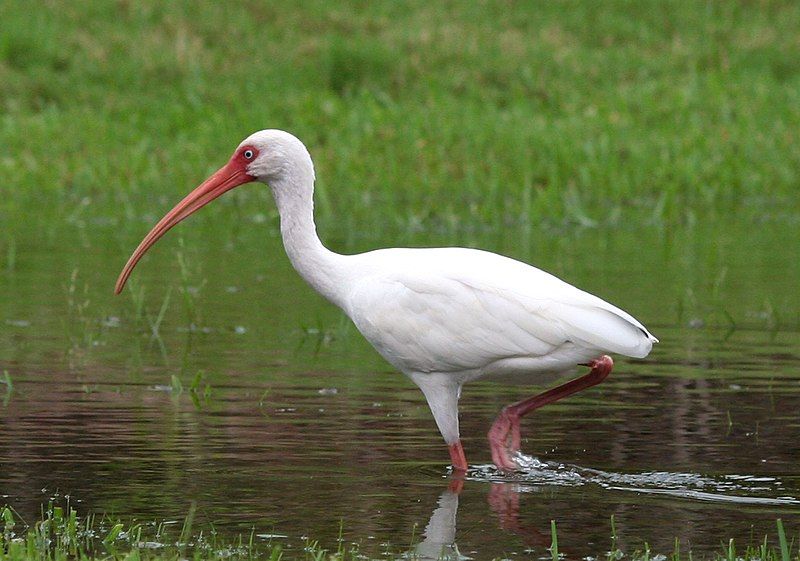
The American white ibis is a species of bird belonging to the ibis family (Threskiornithidae). This species of bird can be found in a wide variety of habitats, ranging from Virginia in the United States all the way down to the tropics of the New World.
The white ibis is particularly adapted for life in coastal environments, including marshes, beaches, and wetlands. They generally feed on aquatic prey, such as small crustaceans and insects.
The American white ibis is known for its distinctive white plumage, as well as its long, curved bill. These birds can be easily identified by their bright white feathers and pink legs.
The American white ibis is often seen in large groups, as they tend to congregate in large flocks when searching for food. They are also known for their graceful, soaring flight patterns.
| Kingdom | Animalia |
| Phylum | Chordata |
| Class | Aves |
| Order | Pelecaniformes |
| Family | Threskiornithidae |
| Genus | Eudocimus |
| Species | E. albus |
5. Northern Mockingbird
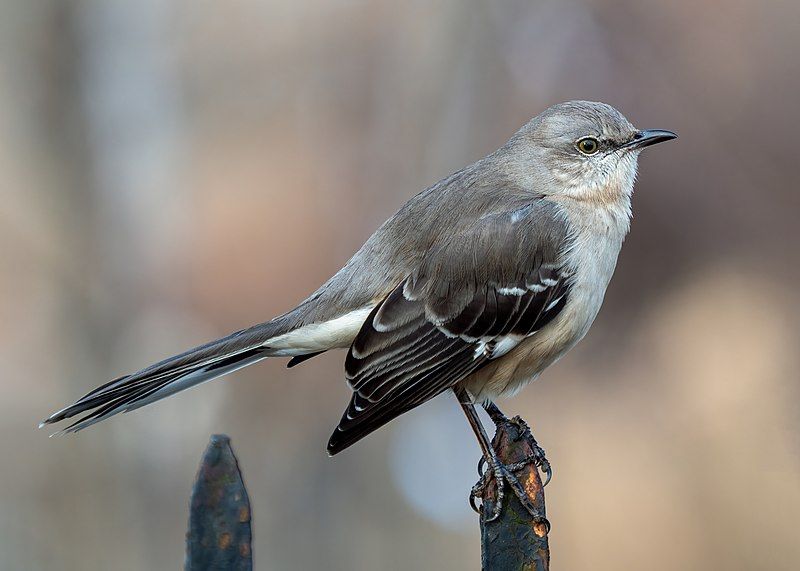
The northern mockingbird is a species of mockingbird that is found in North America. It is mainly a permanent resident, but some birds will migrate south during harsh weather.
This species is not commonly found in Europe, but there have been rare sightings of the bird on the continent. The northern mockingbird is a medium-sized bird, with a length of 9-11 inches and an average weight of 2.2-3.3 ounces.
They have grayish-brown upperparts and lighter gray-white underparts. This species is well known for its vocalizations, with a wide repertoire of up to 200 songs.
They are mainly omnivorous, eating a variety of insects, fruits, and seeds. This species of mockingbird is considered to be of least concern by the IUCN, however, their population is declining due to habitat destruction, nest predation, and collisions with vehicles.
For this reason, conservation efforts are being taken to help protect the northern mockingbird. These efforts include the protection of their natural habitat, as well as the creation of bird-friendly spaces for them to nest and feed in.
| Kingdom | Animalia |
| Phylum | Chordata |
| Class | Aves |
| Order | Passeriformes |
| Family | Mimidae |
| Genus | Mimus |
| Species | M. polyglottos |
6. Little Blue Heron
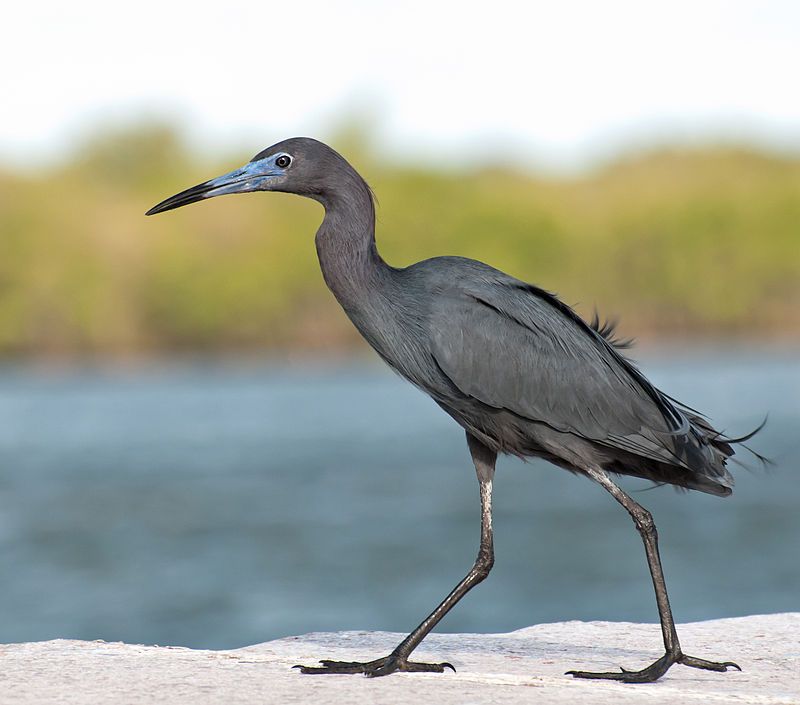
The little blue heron, a member of the genus Egretta, is a small heron with dark plumage. It has a two-toned bill, with the upper mandible being lighter than the lower. Juveniles of the species are entirely white, making them look similar to the snowy egret.
During the breeding season, adults of the species develop different coloration, typically on the head, legs, and feet. This coloration can range from browns and grays to blues and greens, depending on the individual heron.
This coloration helps the heron to stand out in its environment and to attract potential mates. The little blue heron is an interesting species due to its varied coloration depending on the season.
| Kingdom | Animalia |
| Phylum | Chordata |
| Class | Aves |
| Order | Pelecaniformes |
| Family | Ardeidae |
| Genus | Egretta |
| Species | E. caerulea |
7. Ardea Alba
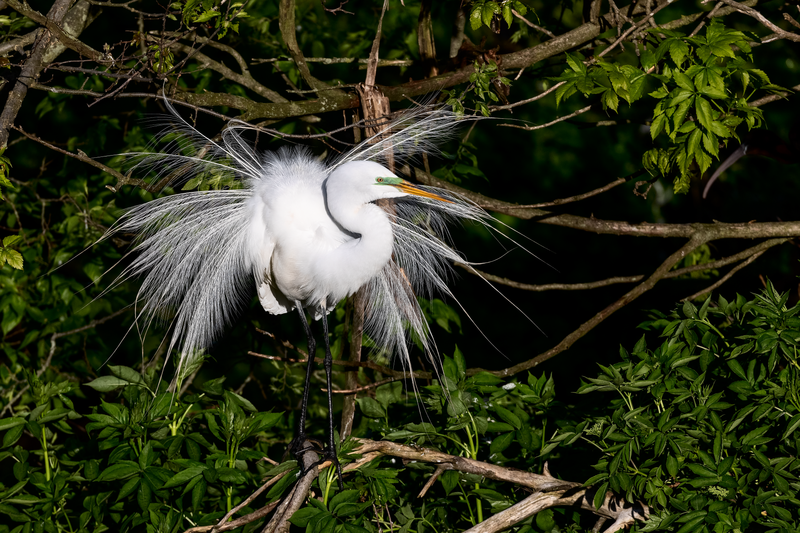
The great egret, also known by several other names, is a large, far-reaching bird species. It has four subspecies, which are found across the globe in Asia, Africa, the Americas, and southern Europe.
Recently, the great egret has been spreading further afield, and now can be spotted in more northern areas of Europe, too. The great egret is an impressive bird, standing up to three feet tall with a wingspan of nearly five feet.
It has a long, slender neck and a bright white plumage, making it an unmistakable sight in the skies.
Its long yellow legs and black feet make it easy to identify on the ground, too. The great egret is a wading bird, meaning that it spends much of its time in shallow water, searching for food. It mainly eats small fish, amphibians, crustaceans, insects, and even small reptiles.
It uses its long, sharp beak to spear prey or grab it with its feet. The great egret is an important species in the ecosystem, helping to keep the populations of its prey in check.
It is also a symbol of beauty, grace, and elegance, and is often featured in paintings, photographs, and sculptures. As such, it is a popular bird to observe and appreciate in the wild.
| Kingdom | Animalia |
| Phylum | Chordata |
| Class | Aves |
| Order | Pelecaniformes |
| Family | Ardeidae |
| Genus | Ardea |
| Species | A. alba |
8. Red-Shouldered Hawk
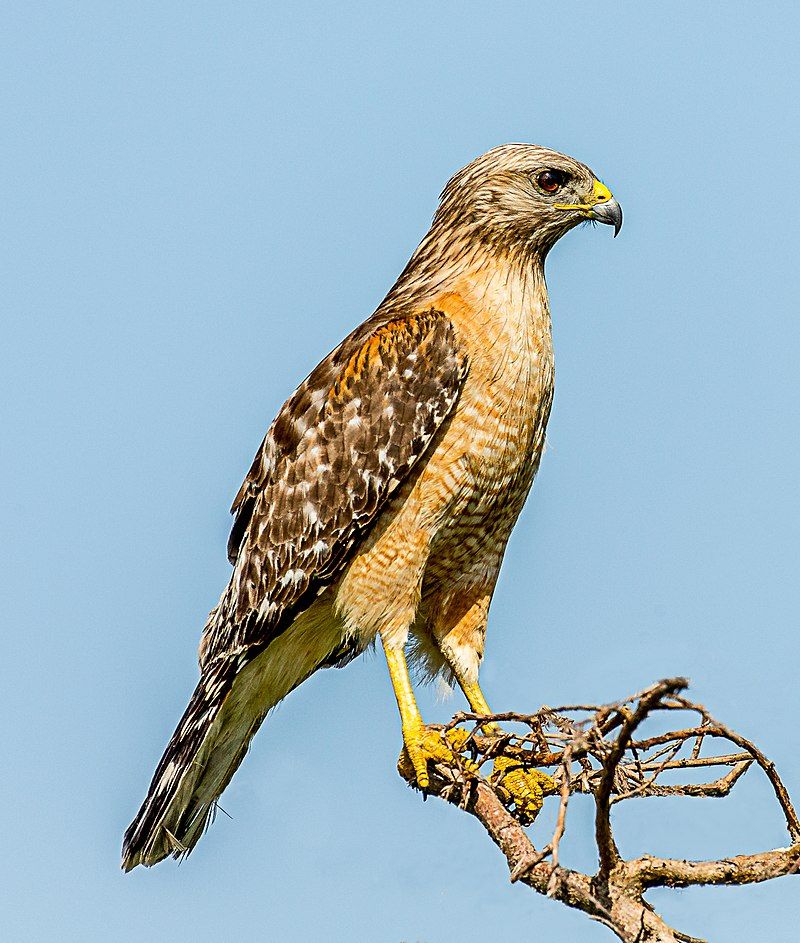
The red-shouldered hawk is a medium-sized bird belonging to the buteo family. It is native to eastern North America, from the coast of California to northern and northeastern-central Mexico.
It is a permanent resident throughout most of its range, meaning that it does not migrate. However, some of the hawks in the northern regions of its range do migrate southwards, typically to central Mexico.
This migration is likely due to the colder temperatures found in the northern parts of its range during the winter months.
| Kingdom | Animalia |
| Phylum | Chordata |
| Class | Aves |
| Order | Accipitriformes |
| Family | Accipitridae |
| Genus | Buteo |
| Species | B. lineatus |
9. Sandhill Crane
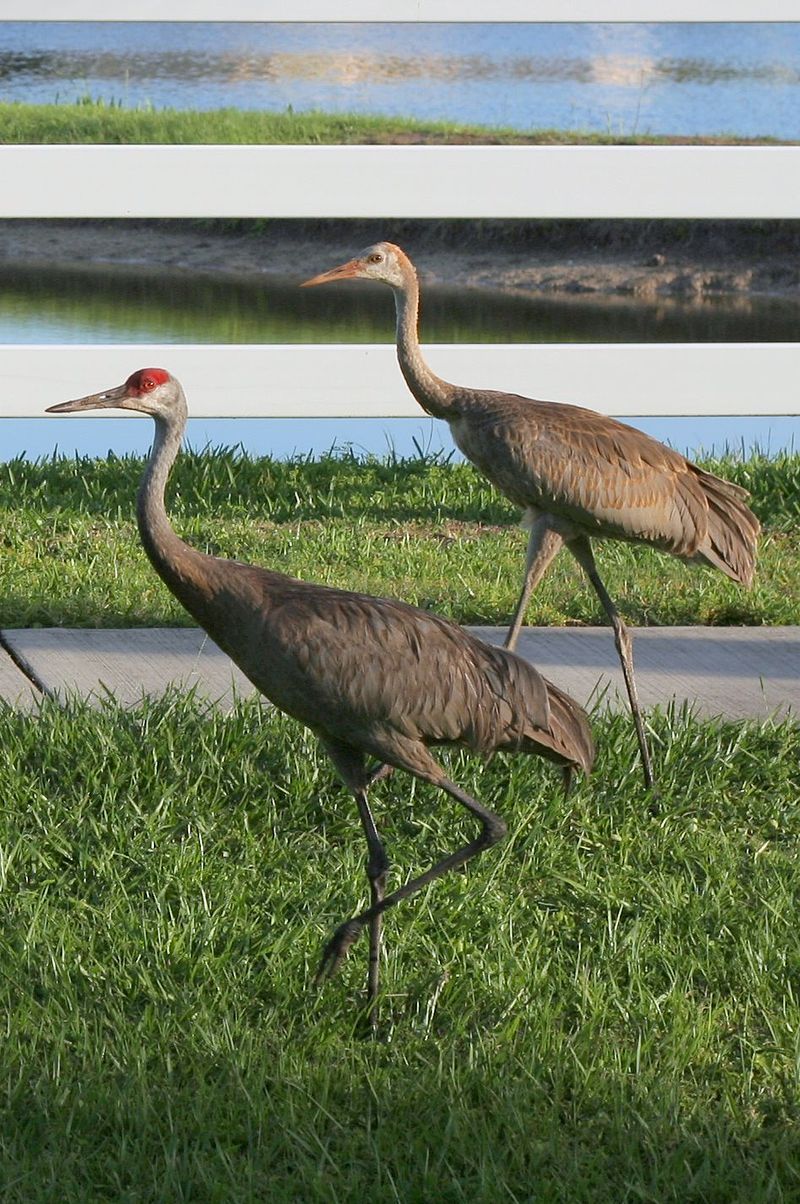
The sandhill crane is a species of large crane found in North America and extreme northeastern Siberia. It is named for its preferred habitat in grasslands, such as the Platte River on the edge of Nebraska’s Sandhills on the American Great Plains.
These birds can be distinguished by their grey feathers, long necks, and red crowns. They have wingspans of up to six feet and are capable of standing up to four feet tall.
Sandhill cranes are omnivorous, feeding on a variety of plant materials such as roots, seeds, and berries, as well as small aquatic and terrestrial creatures. During the breeding season, they will gather in large groups to build nests and raise their young.
During this time, the birds will perform elaborate courtship dances with their wings, heads, and bodies. Sandhill cranes are long-lived birds, with lifespans of up to 25 years in the wild.
They are also considered quite intelligent, with some birds being able to recognize humans and remember them for years. Unfortunately, their numbers have been declining due to the destruction of their natural habitat.
Conservation efforts are underway to help protect these amazing birds and ensure their future.
| Kingdom | Animalia |
| Phylum | Chordata |
| Class | Aves |
| Order | Gruiformes |
| Family | Gruidae |
| Genus | Antigone |
| Species | A. canadensis |
10. Short-Tailed Hawk
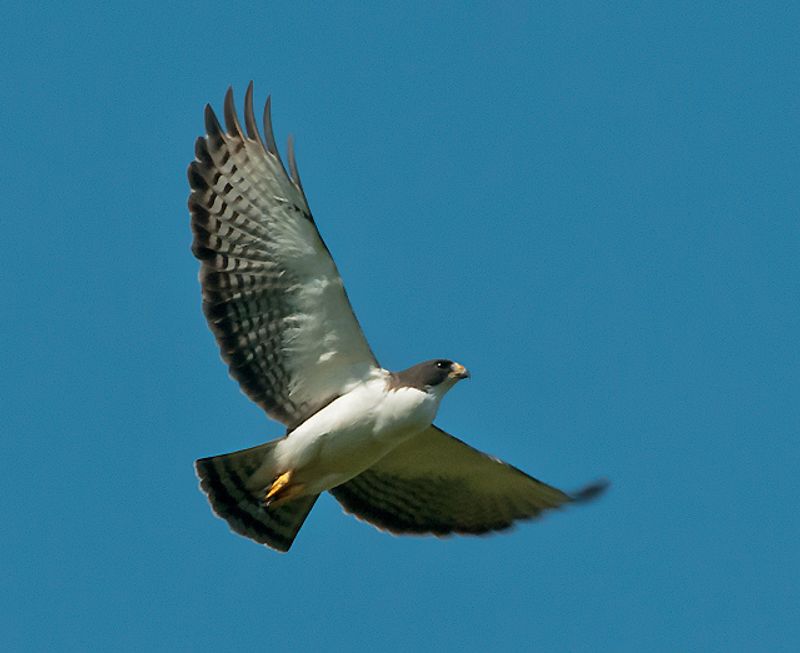
The short-tailed hawk is a bird of prey native to the Americas. It belongs to the family Accipitridae, which includes eagles and Old World vultures. This family of birds is renowned for their hunting abilities, as they are powerful flyers and have excellent vision.
The short-tailed hawk belongs to the genus Buteo, which is a group of birds that are often referred to as “buteos” or “buzzards”. Although they are closely related to true hawks, they are not considered to be true hawks.
This is because they have different physical characteristics, such as shorter tails, and different behaviors, such as preferring to soar rather than actively hunting. Despite this, they are still considered to be a part of the hawk family due to their shared traits.
| Kingdom | Animalia |
| Phylum | Chordata |
| Class | Aves |
| Order | Accipitriformes |
| Family | Accipitridae |
| Genus | Buteo |
| Species | B. brachyurus |
11. Downy Woodpecker
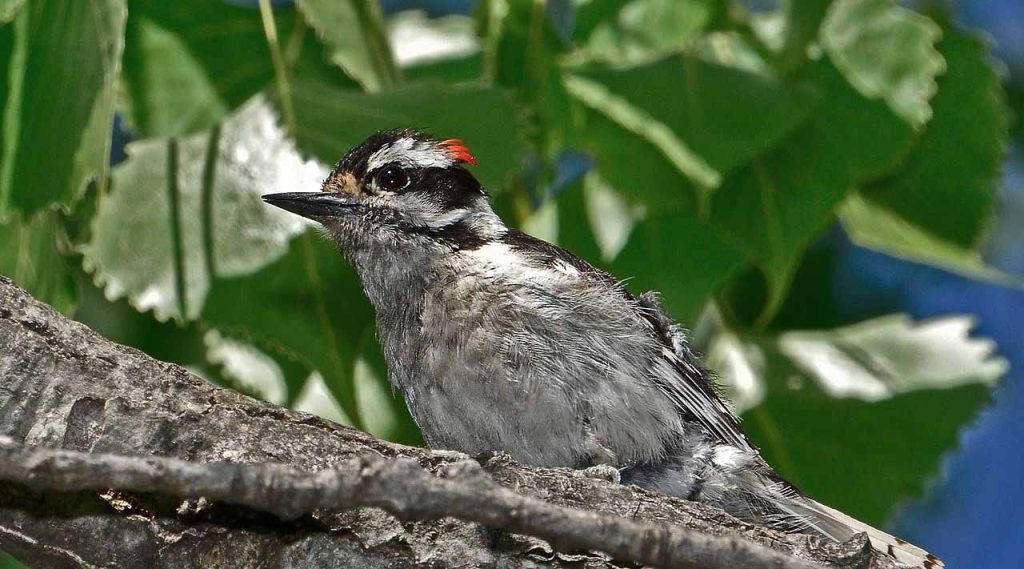
Source: Wikipedia
The Downy Woodpecker is a species of woodpecker that is the smallest of its kind found in North America. Its average length is 14 to 18 cm, and it is known to inhabit forested areas across the United States and Canada.
However, its presence is not found in some parts such as the desert regions of the Southwest and the northern tundra. Woodpeckers are generally found in deciduous and coniferous forests, as well as in orchards and urban areas.
The Downy Woodpecker is usually seen in mature hardwood forests, but they can also be found in open woodlands and parks. It is a common resident in the eastern United States and Canada, but it is rarer in the West. Downy Woodpeckers feed on insects, nuts, and fruits.
They will also eat suet, nectar, and other food sources provided at bird feeders. They have a variety of calls and songs, and they communicate with other woodpeckers by drumming on trees. They are also known to carve out cavities in trees for nesting.
Overall, the Downy Woodpecker is an important species of woodpecker found in North America, and its presence is an indication of a healthy forest ecosystem.
| Kingdom | Animalia |
| Phylum | Chordata |
| Class | Aves |
| Order | Piciformes |
| Family | Picidae |
| Genus | Dryobates |
| Species | D. pubescens |
12. Red-Bellied Woodpecker
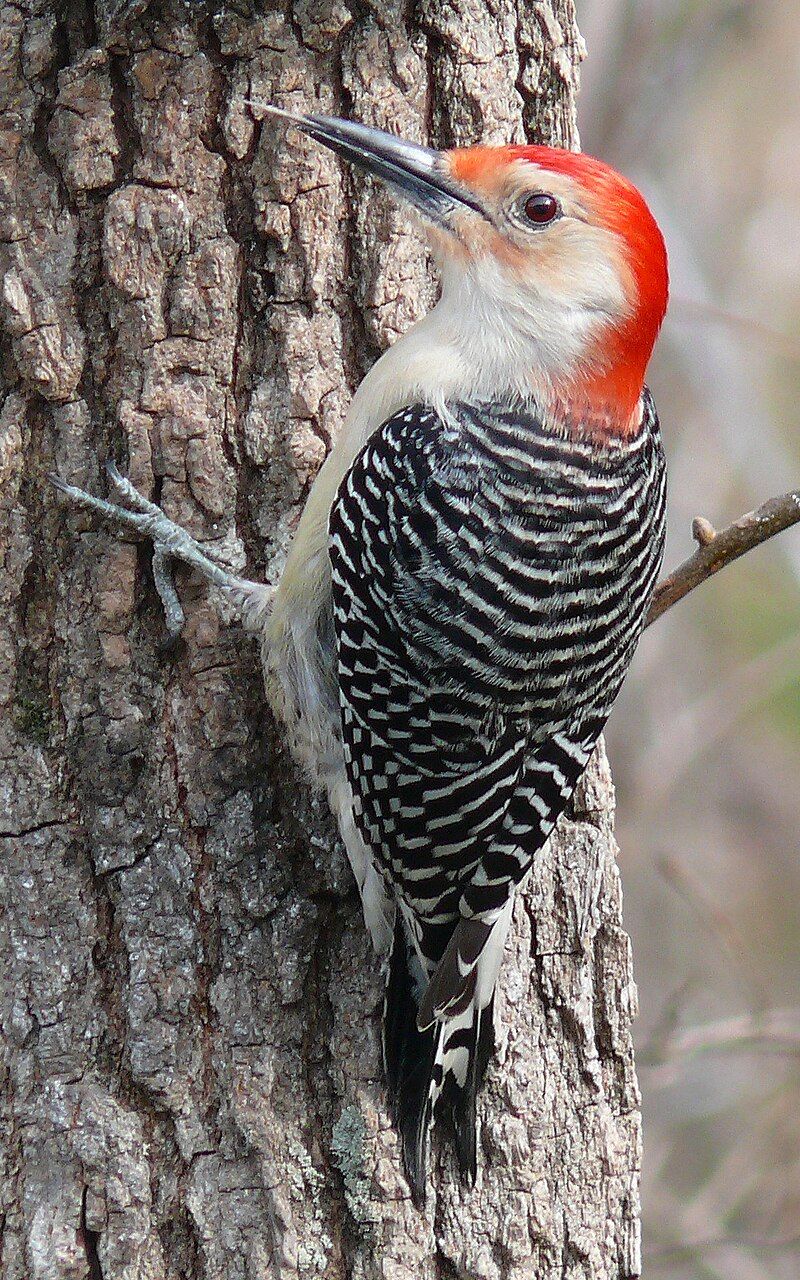
The red-bellied woodpecker is a common bird species belonging to the family Picidae. It is a medium-sized bird, and is found mainly in the eastern United States, ranging from the south of Florida to the north of Canada.
Its main habitat is mature deciduous forests, but it can also be found in urban areas where there are plenty of trees. It is a boldly marked bird, with a bright red cap surrounded by a black and white checkerboard pattern, and a red belly.
The red-bellied woodpecker feeds mainly on nuts, seeds, and insects, and is known for its loud, hammering call and its habit of drilling holes in trees. It nests in natural cavities in dead or dying trees, or in nest boxes provided by humans.
The red-bellied woodpecker is an important species for maintaining ecological balance in the forests of the eastern United States and is an important food source for many birds of prey.
| Kingdom | Animalia |
| Phylum | Chordata |
| Class | Aves |
| Order | Piciformes |
| Family | Picidae |
| Genus | Melanerpes |
| Species | M. carolinus |
13. Florida Scrub Jay
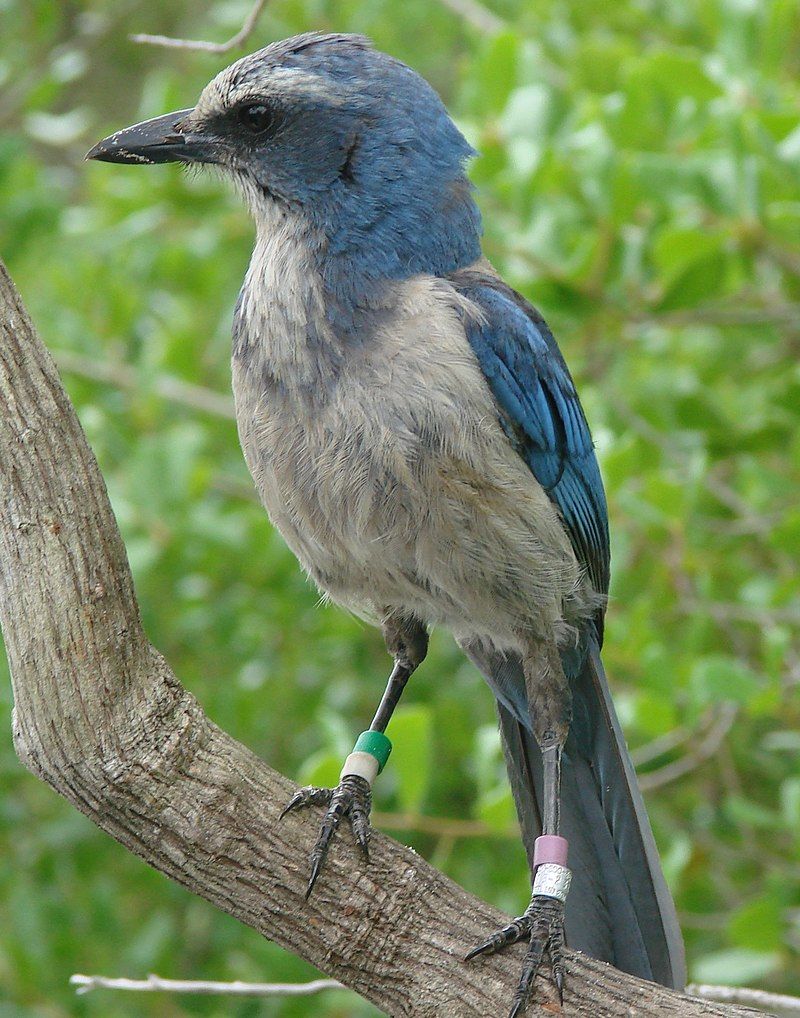
The Florida scrub jay is a species of scrub jay that is native to North America. It is the only bird species that is endemic to the state of Florida, which means that it is only found in that particular region.
This makes the Florida scrub jay a highly sought-after species for birders, as it is one of only 15 species of birds that is endemic to the continental United States. The Florida scrub jay is a medium-sized bird with a grey body and a prominent white stripe on its forehead.
It has a strong, direct flight and feeds mainly on insects, fruits, and seeds. Its population is declining due to habitat loss, but it is still found in many areas of the state, including scrubby habitats, pine flatwoods, and residential areas.
Conservation efforts are being made to protect this species and its habitat, making it a valuable resource for birders and wildlife enthusiasts alike.
| Kingdom | Animalia |
| Phylum | Chordata |
| Class | Aves |
| Order | Passeriformes |
| Family | Corvidae |
| Genus | Aphelocoma |
| Species | A. coerulescens |
14. Limpkin
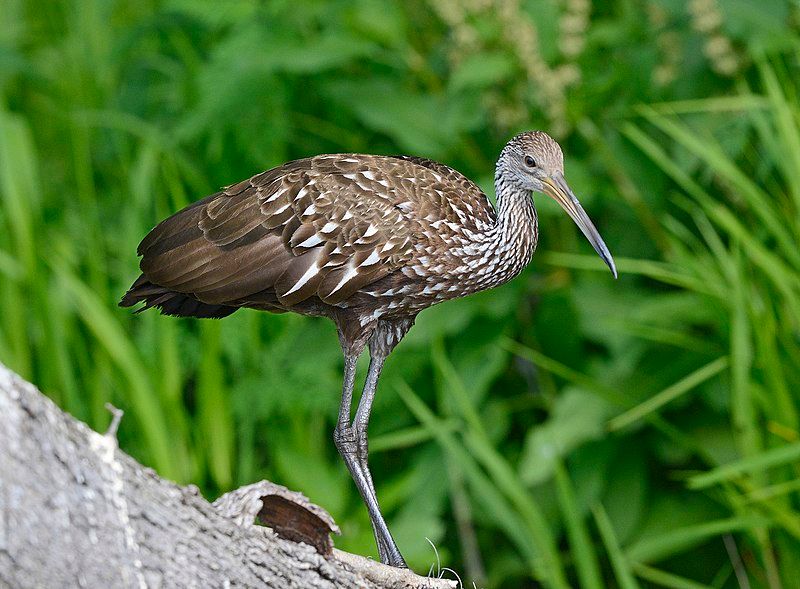
The limpkin is a large wading bird that is related to rails and cranes. It is the only existing species in the family Aramidae and is found mostly in wetlands in warm parts of the Americas, from Florida to northern Argentina.
Remarkably, there have even been sightings of the limpkin as far north as Pennsylvania. It is also known by other names such as carrao, courlan, and crying bird. The limpkin is a large bird with a long neck and a curved bill.
It is usually brownish-gray in color, with white and brown stripes running along the body and wings. Its eyes are bright yellow, and its legs and feet are long and orange.
The limpkin can grow up to three feet long and can weigh up to three pounds. The limpkin is a solitary bird that prefers to stay near water. It feeds mainly on mollusks and aquatic insects, although it will also eat frogs, small fish, and other small creatures.
It is a vocal bird and is known for its distinctive “crying” call, which is why it is sometimes referred to as the “crying bird.” The limpkin is a fascinating bird and plays an important role in the ecosystems of the Americas.
It is considered to be a species of least concern by the International Union for Conservation of Nature, meaning that it is not currently threatened by extinction.
| Kingdom | Animalia |
| Phylum | Chordata |
| Class | Aves |
| Order | Gruiformes |
| Family | Aramidae |
| Genus | Aramus |
| Species | A. guarauna |
15. Snail Kite
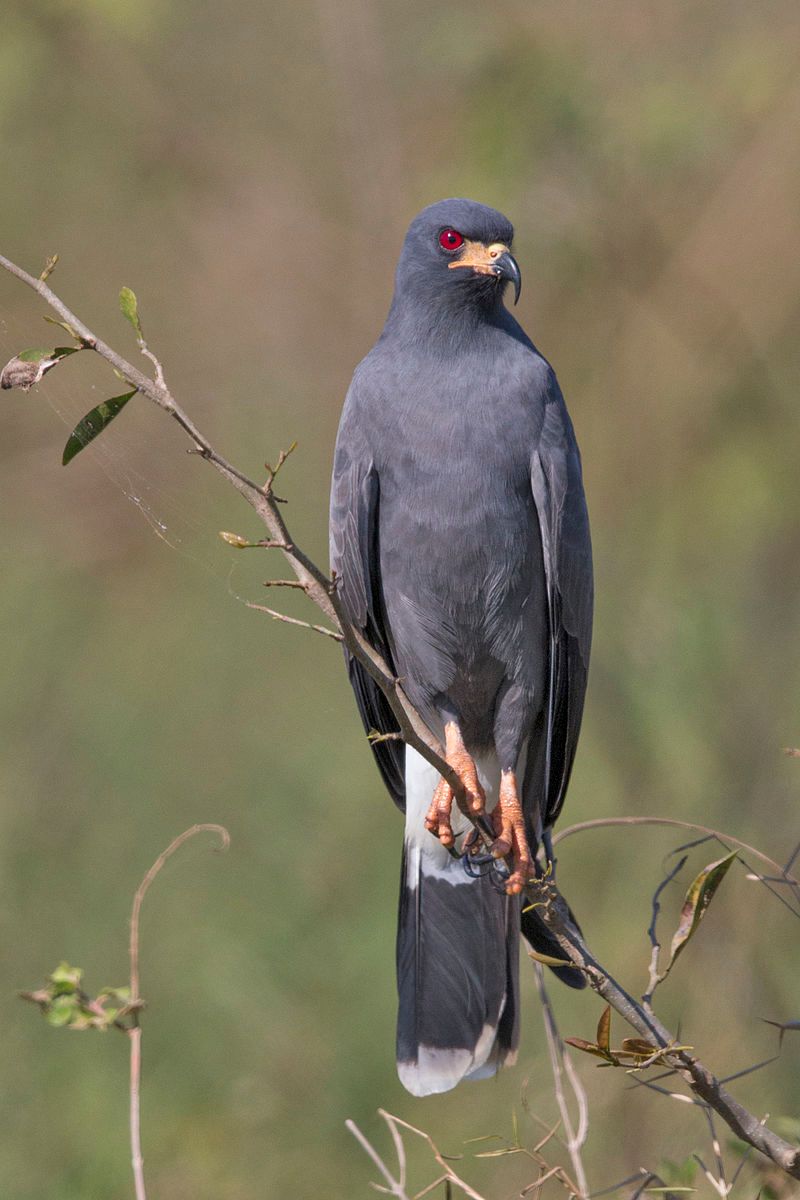
The snail kite is a species of bird of prey, belonging to the Accipitridae family, which also includes eagles, hawks, and Old World vultures. Its relative, the slender-billed kite, was previously placed in the genus Rostrhamus, making it the only species of its kind.
However, recent classification has placed the slender-billed kite in the genus Helicolestes, thus making Rostrhamus monotypic, meaning that it is the only species in its genus.
This reclassification has resulted in the snail kite being the only species in the Rostrhamus genus, a fact which reflects the unique characteristics of this species.
The snail kite’s habitat is primarily found in subtropical wetlands, mostly in Florida, and it feeds exclusively on snails, which it catches with its curved beak.
Despite its specialized diet, the snail kite is an important species for maintaining the balance of the wetland ecosystems in which it is found.
| Kingdom | Animalia |
| Phylum | Chordata |
| Class | Aves |
| Order | Accipitriformes |
| Family | Accipitridae |
| Genus | Rostrhamus |
| Species | R. sociabilis |
16. Squawk
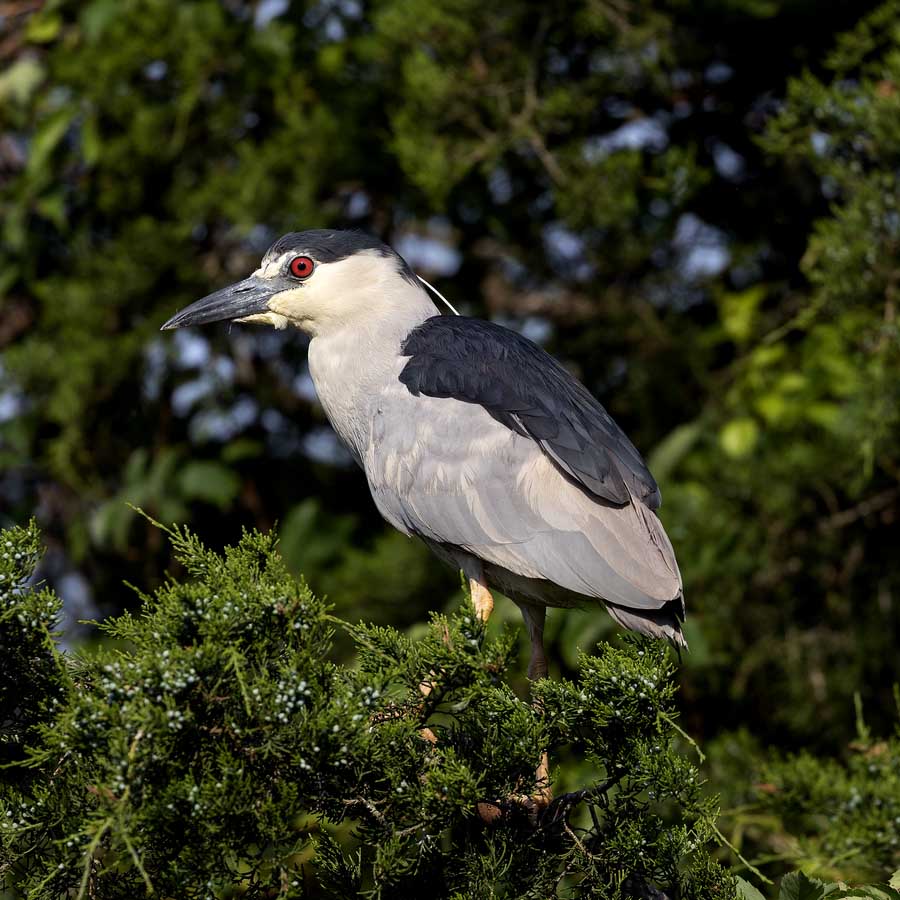
Source: commons.wikimedia.org
The black-crowned night heron is a species of heron found around the world, including parts of Europe, Asia, and North and South America. It is more commonly referred to as the night heron in Eurasia.
This species is a medium-sized heron, with a black-capped head and a light gray body. It has a short neck and long legs, and a broad wingspan, which allows it to soar high in the sky. It is usually found near water sources such as lakes, rivers, wetlands, and marshes.
The black-crowned night heron is mainly active during the night when it hunts for its prey of fish, frogs, and small mammals. During the day, it perches in trees and shrubs to rest and watch its surroundings.
Its call is a low croaking noise, and its nest is usually built in trees or bushes near water. This species is widespread and quite common across its range and can be seen in many different habitats.
| Kingdom | Animalia |
| Phylum | Chordata |
| Class | Aves |
| Order | Pelecaniformes |
| Family | Ardeidae |
| Genus | Nycticorax |
| Species | N. nycticorax |
17. Burrowing Owl
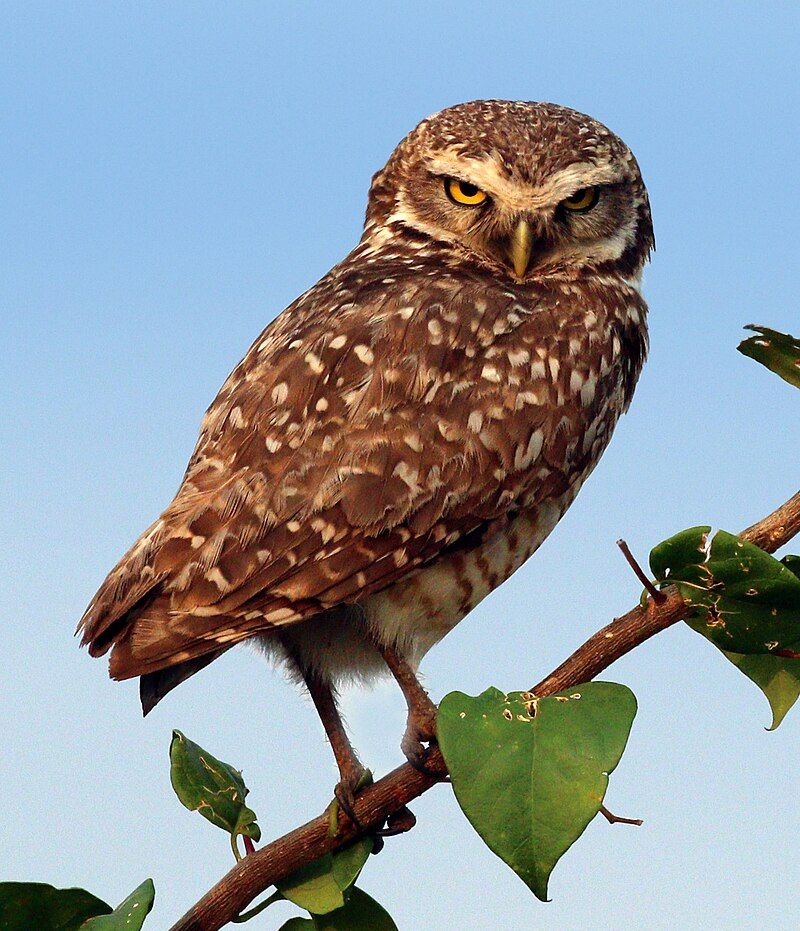
The burrowing owl, scientifically known as Athene cunicularia, is an impressive species of owl that is found across both North and South America. It is also known as the shoco, which is derived from its loud, distinctive call.
This species is quite small, measuring between 19 and 26 centimeters in length, and has long legs which are adapted for running and digging.
This species of owl is usually found in open, dry areas with low vegetation, such as grasslands, rangelands, deserts, and agricultural areas. They use their strong legs to dig burrows in the ground, which they use as their homes.
Burrowing owls are also known to take up residence in abandoned burrows of other animals, such as prairie dogs. They are usually solitary creatures but may form small groups when breeding.
Burrowing owls are mostly nocturnal, but during the day they will often sit at the entrance of their burrow and wait for potential prey. They mostly feed on insects, small mammals, reptiles, and birds. They have also been known to scavenge carrion.
Overall, the burrowing owl is an incredible species of owl that is found throughout North and South America. They are easily identifiable by their small size and long legs, and they are fascinating to watch in their natural habitat.
| Kingdom | Animalia |
| Phylum | Chordata |
| Class | Aves |
| Order | Strigiformes |
| Family | Strigidae |
| Genus | Athene |
| Species | A. cunicularia |
18. Red-Tailed Hawk
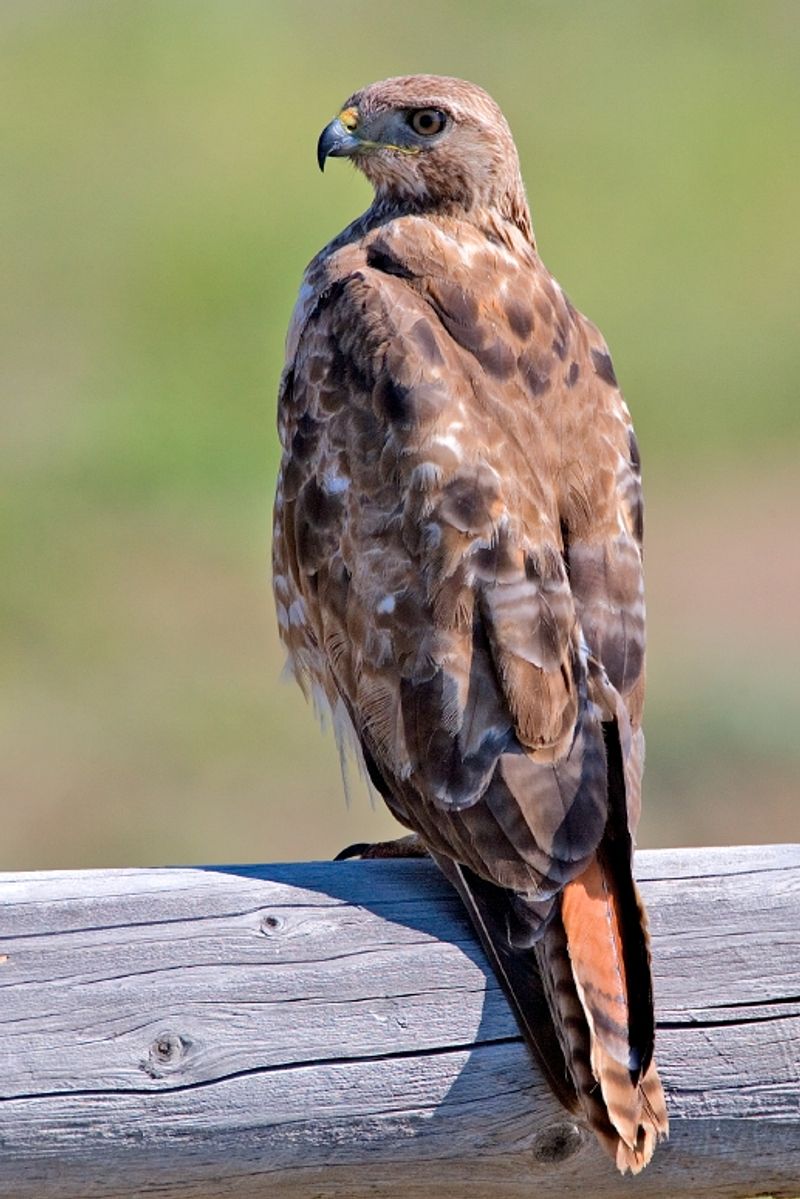
The red-tailed hawk is an impressive bird of prey that is widely distributed throughout North America, ranging from the far north of Alaska and Canada all the way down to Panama and the West Indies.
It is part of a genus of birds known as Buteo, which is abundant in North America and across the globe. Red-tailed hawks are easily identifiable by their bright red tails, which are usually visible when they are in flight.
These birds of prey feed primarily on small mammals, such as voles, mice, and rabbits, as well as on reptiles, amphibians, and insects. They are also known to scavenge carrion when available.
Red-tailed hawks are solitary birds, but they may form pairs or small family groups during the breeding season. They prefer to nest in tall trees, such as pine and oak, but they will also use artificial structures, such as power poles.
Red-tailed hawks are highly adaptable birds and can be found in a variety of habitats including woodlands, grasslands, and even urban areas. They are an important part of the ecosystem, helping to keep populations of small mammals in check.
| Kingdom | Animalia |
| Phylum | Chordata |
| Class | Aves |
| Order | Accipitriformes |
| Family | Accipitridae |
| Genus | Buteo |
| Species | B. jamaicensis |
19. White-Crowned Pigeon
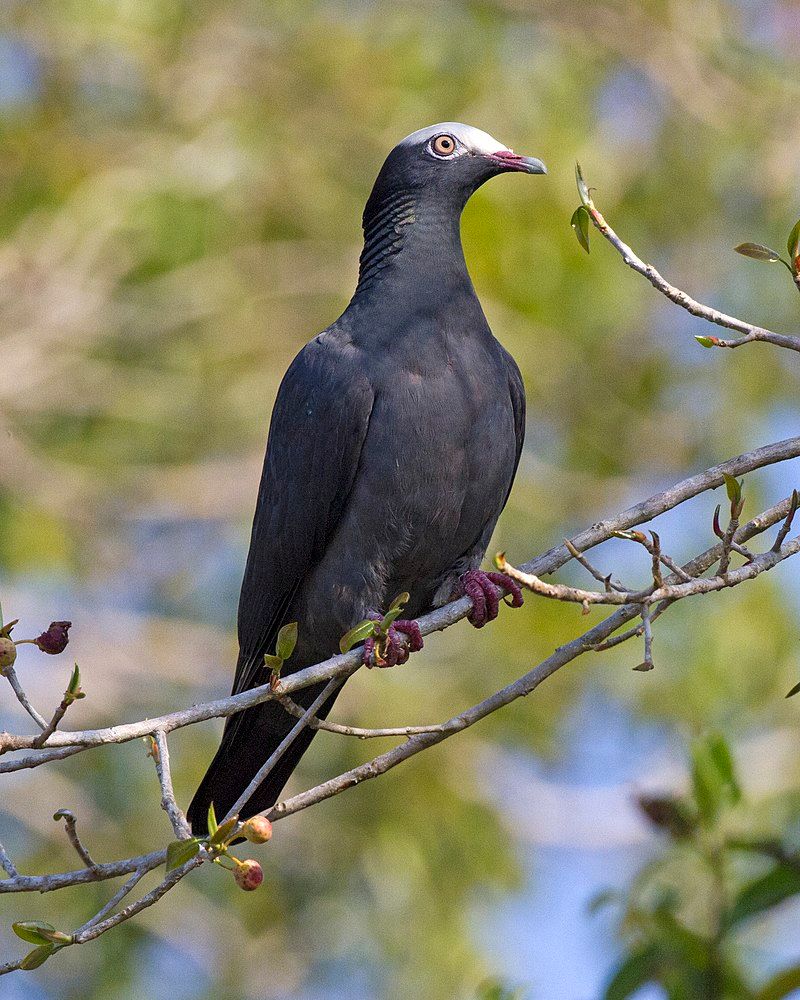
The white-crowned pigeon is a species of Columbidae, a family of birds that includes doves and pigeons. This species of bird is found mostly in the Caribbean, where it feeds on fruits and seeds.
Famous American artist and naturalist John James Audubon is famous for his watercolour painting of this species, which was featured in his work Birds of America, published in the early 19th century.
Audubon’s painting is a beautiful representation of the white-crowned pigeon, capturing the unique beauty of its white-crowned head and its distinct blue-gray wings. It is a testament to the beauty of nature and the power of art to capture it.
The painting of the white-crowned pigeon is a reminder of the importance of conservation and environmental protection, and a reminder of the work of Audubon and his contemporaries to document the beauty of nature.
| Kingdom | Animalia |
| Phylum | Chordata |
| Class | Aves |
| Order | Columbiformes |
| Family | Columbidae |
| Genus | Patagioenas |
| Species | P. leucocephala |
20. Anhinga
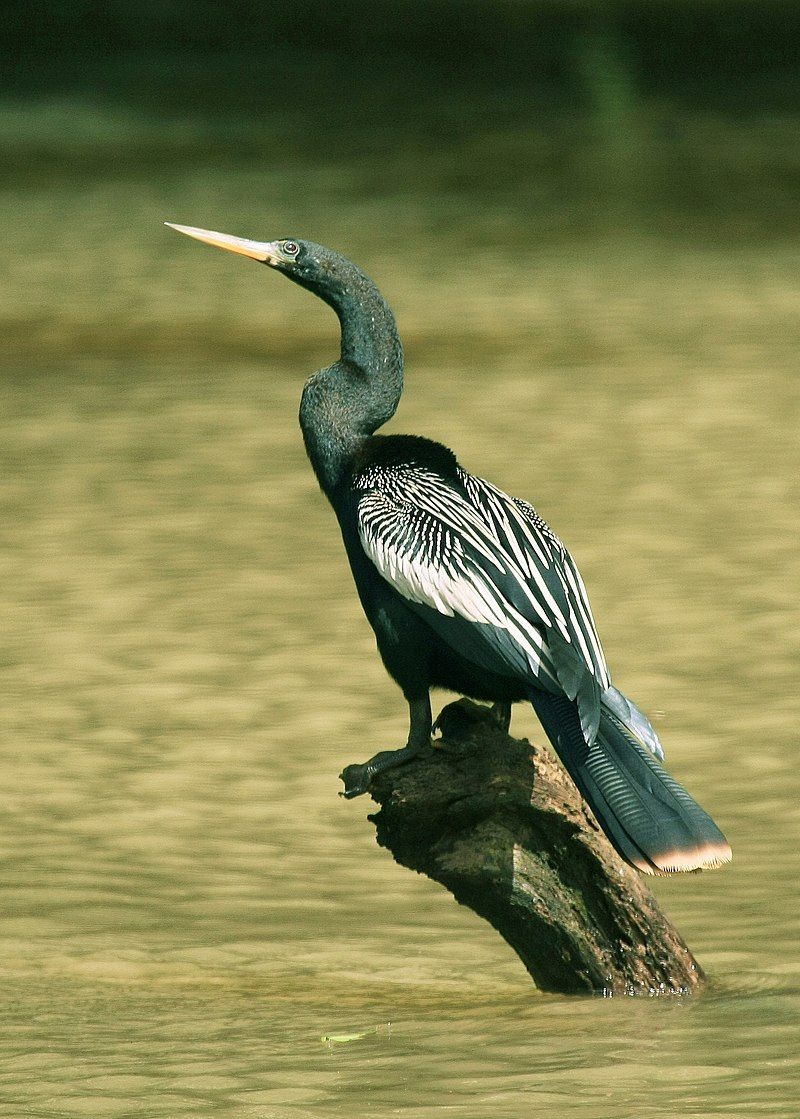
The Anhinga is a water bird native to the warmer parts of the Americas. It is also known by a variety of other names such as snakebird, darter, American darter, and water turkey.
The origin of its name is derived from the Brazilian Tupi language, where ‘a’ñinga’ means ‘devil bird’ or ‘snake bird’. This is an appropriate name for the bird, as its long neck resembles that of a snake, and its feathers are dark and somewhat menacing.
The Anhinga is recognizable by its long neck, which is often held in a curved position, and its long, pointy wings. The feathers of the bird are predominantly black, with white markings on the wings and back. Its beak is long, sharp, and pointed, and its legs are short and thin.
This bird is an excellent swimmer and can dive underwater for long periods of time. It can be seen as spearfishing, as it uses its pointed beak to catch its prey. The Anhinga is a solitary bird and can be found in freshwater swamps, marshes, and shallow lakes.
It is an excellent hunter and feeds mainly on fish, small reptiles, and amphibians. The bird is also known to eat waterfowl, insects, and other small prey. It is an important predator in its native habitat and helps to keep the populations of other animals in check.
The Anhinga is an important part of its environment and is an integral part of its ecosystem. Its unique appearance and mysterious behavior have captured the imaginations of many people, and it is an interesting bird to observe in its natural habitat.
| Kingdom | Animalia |
| Phylum | Chordata |
| Class | Aves |
| Order | Suliformes |
| Family | Anhingidae |
| Genus | Anhinga |
| Species | A. anhinga |
21. Tricolored Heron
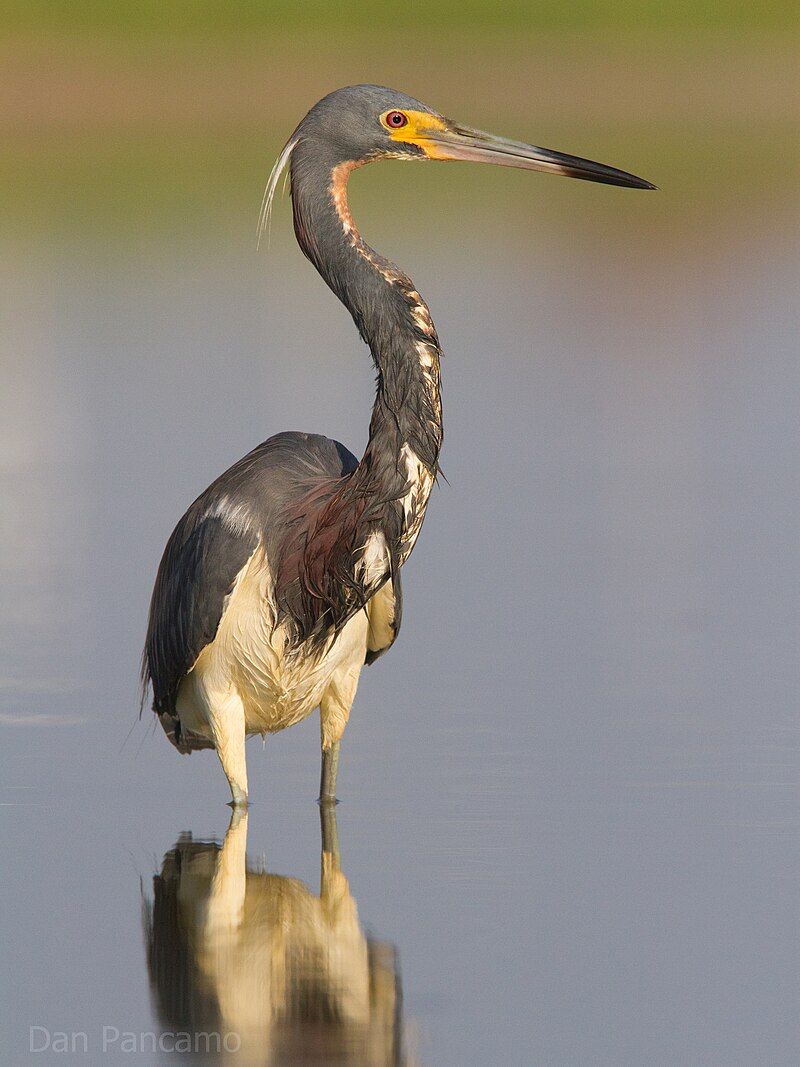
The tricolored heron is a species of heron that is native to coastal regions in the Americas. Formerly known as the Louisiana heron, it is a small species that is more solitary than other herons found in the Americas.
Its diet consists mostly of small fish, and it is usually seen alone as opposed to other heron species which are often found in large groups.
The tricolored heron has a distinct colouring that consists of white, grey, and black feathers, which helps to distinguish it from other species of heron. Its long and slender body and sharp beak make it an efficient predator in its coastal environment.
The tricolored heron is an important species to the Americas and plays an important role in its coastal ecosystems.
| Kingdom | Animalia |
| Phylum | Chordata |
| Class | Aves |
| Order | Pelecaniformes |
| Family | Ardeidae |
| Genus | Egretta |
| Species | E. tricolor |
22. Purple Gallinule
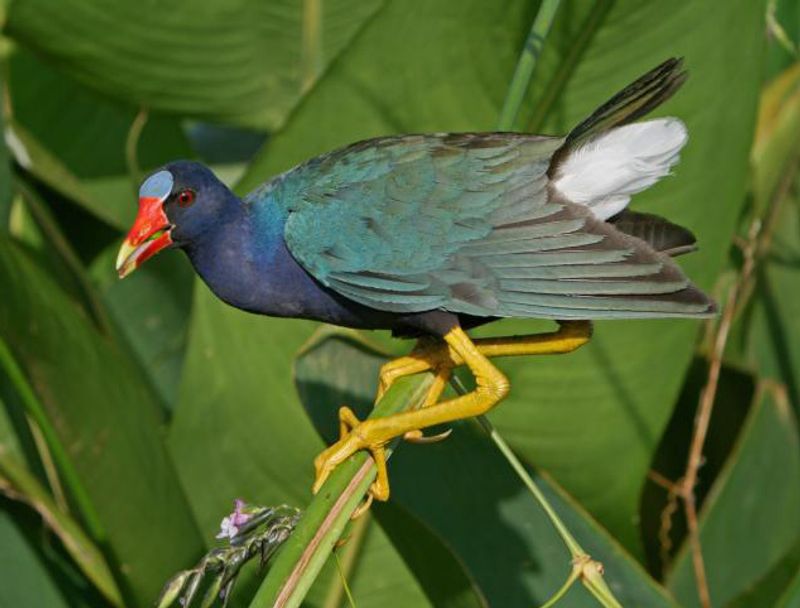
The purple gallinule is a type of swamphen, which belongs to the genus Porphyrio. This type of bird is part of the order Gruiformes, which refers to a group of bird species that have characteristics similar to cranes.
This order includes cranes, rails, and crakes, with the purple gallinule being a member of the rail family, Rallidae. It is also known as the yellow-legged gallinule in some areas. The purple gallinule is a small bird with a long tail and a deep blue-purple head, neck and chest.
Its belly is a bright yellow, while its back is dark green, with a black band across its eyes. The yellow-legged gallinule has a long, slender bill and a bright yellow beak. Its legs are a yellowish color, which is where it gets its common name.
This bird is found in wetlands and marshes, where it feeds on insects, seeds, and aquatic vegetation. It is also known for its loud call, which is a series of a few loud notes. The purple gallinule is a unique and interesting bird that inhabits a variety of habitats.
This species is not threatened, but it is important to maintain the wetlands and marshes that it calls home. With proper conservation, this species can continue to be seen in its natural habitat.
| Kingdom | Animalia |
| Phylum | Chordata |
| Class | Aves |
| Order | Gruiformes |
| Family | Rallidae |
| Genus | Porphyrio |
| Species | P. martinicus |
23. Gray Kingbird
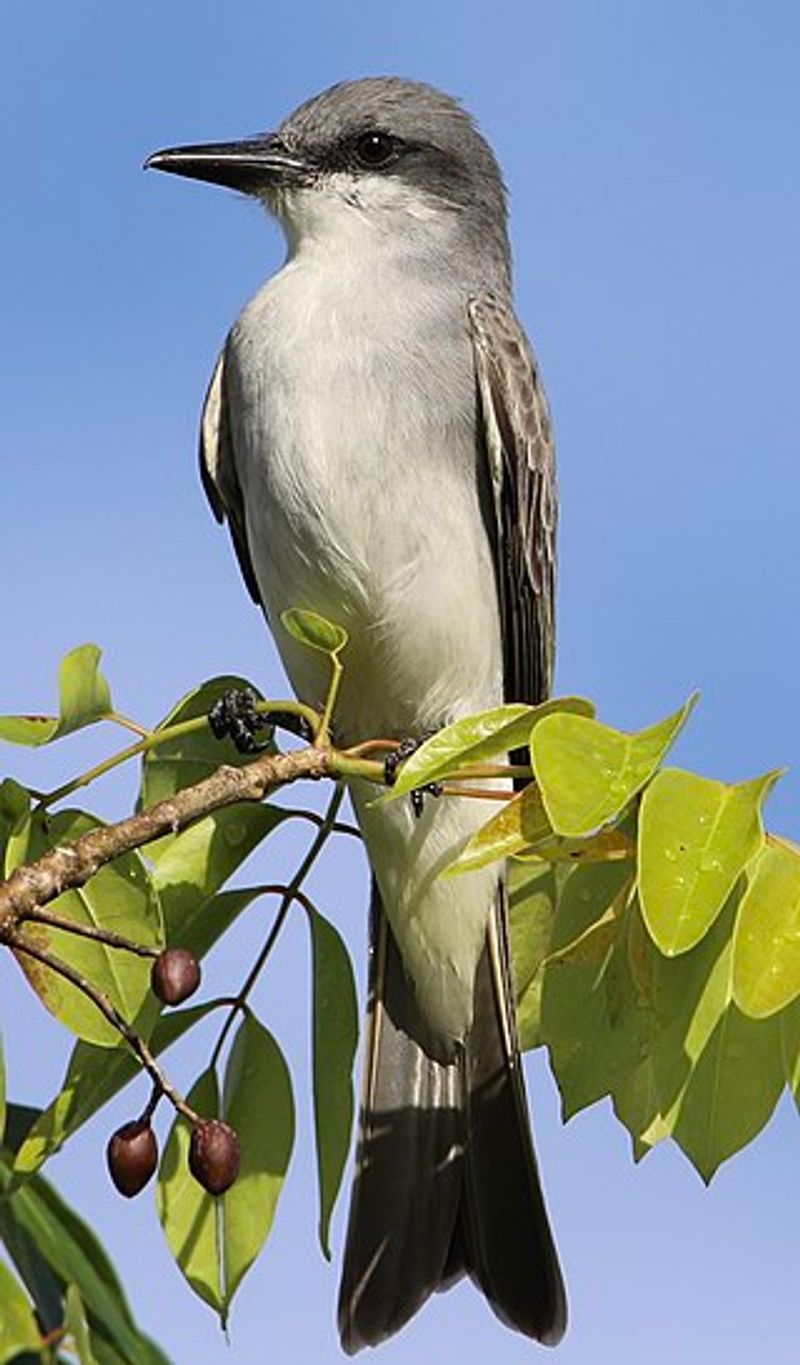
The Gray Kingbird (Tyrannus dominicensis) is a species of passerine bird in the tyrant flycatchers family Tyrannidae. It is found in the Caribbean region and is also known by several other names including Pitirre, Petchary or White-breasted Kingbird.
The species was first described by French naturalist Jean Baptiste Bory de Saint-Vincent in 1823, after being spotted on the Caribbean island of Hispaniola, which was then known as Santo Domingo.
The Gray Kingbird is a medium-sized bird, measuring around 20 cm in length, and has gray plumage on the back, wings and tail, with a white throat and breast. It can be identified by its white eye ring and its characteristic harsh, scolding call.
The Gray Kingbird is a fairly common species, primarily found in open areas, such as pastures, wetlands, savannas, and agricultural fields. It feeds on a variety of insects, including grasshoppers, beetles, wasps, and dragonflies.
The Gray Kingbird is a migratory species, with some populations breeding in the Caribbean and others wintering in South America. It is a generally vocal species, and its song is described as a low, harsh, scolding call.
| Kingdom | Animalia |
| Phylum | Chordata |
| Class | Aves |
| Order | Passeriformes |
| Family | Tyrannidae |
| Genus | Tyrannus |
| Species | T. dominicensis |
24. Green Heron
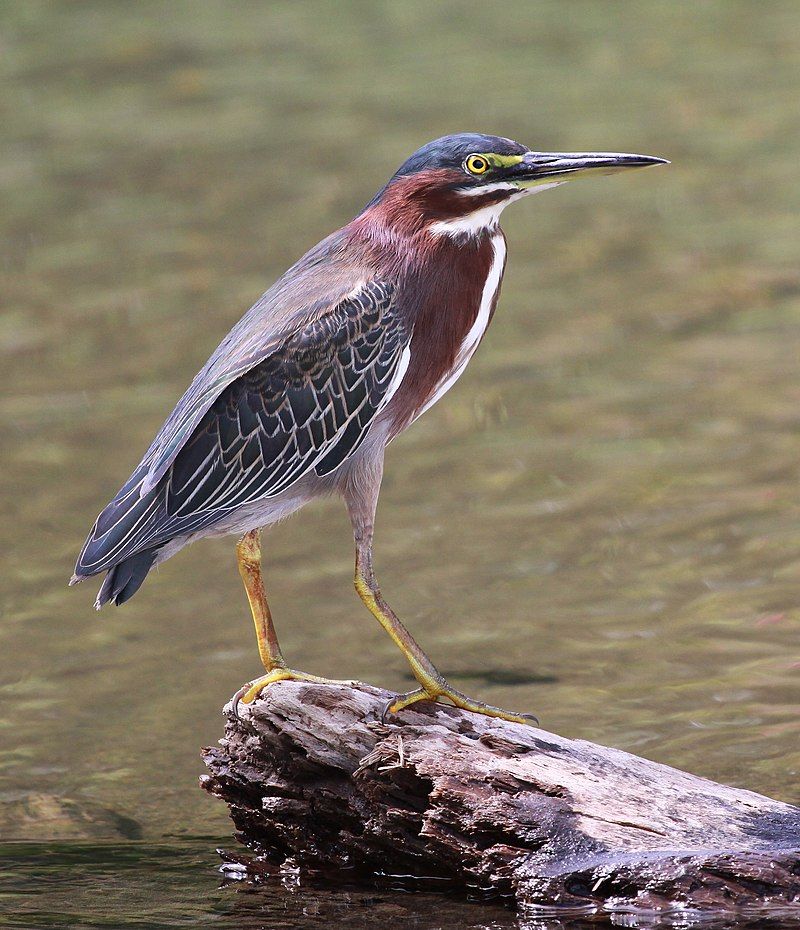
The green heron is a species of heron that is found in North and Central America. It belongs to the genus Butorides, and its scientific name is Butorides virescens.
The genus Butorides is derived from Middle English butor, meaning “bittern”, and Ancient Greek -oides, meaning “resembling”. The species name virescens is Latin for “greenish”.
The green heron is a relatively small heron, with a length of about 54 cm and a wingspan of around 76 cm. It has a greenish-brown back and wings, and a reddish-brown neck and chest. Its head is greyish-blue with a black line running from the bill to the back of the head.
The green heron has a white line on the side of its face, and its legs and feet are yellowish-green. It has a long, pointed bill that is black. The green heron inhabits a variety of wetland habitats, including marshes, streams, swamps, and ponds.
It feeds mainly on small fish, but also eats amphibians, crustaceans, mollusks, insects, and other small animals. This species is a solitary bird and usually hunts by standing motionless and waiting for prey to come within reach of its bill.
| Kingdom | Animalia |
| Phylum | Chordata |
| Class | Aves |
| Order | Pelecaniformes |
| Family | Ardeidae |
| Genus | Butorides |
| Species | B. virescens |
Conclusion
Overall, Orlando is a great city for bird lovers. There are many species of birds that can be seen in the area, and many of them are unique to the region.
From the iconic Sandhill Crane to the elusive Red-shouldered Hawk, Orlando has a diverse bird population that can be enjoyed by all. Whether you’re looking to observe, photograph, or even go bird-watching, Orlando is sure to have something for you.